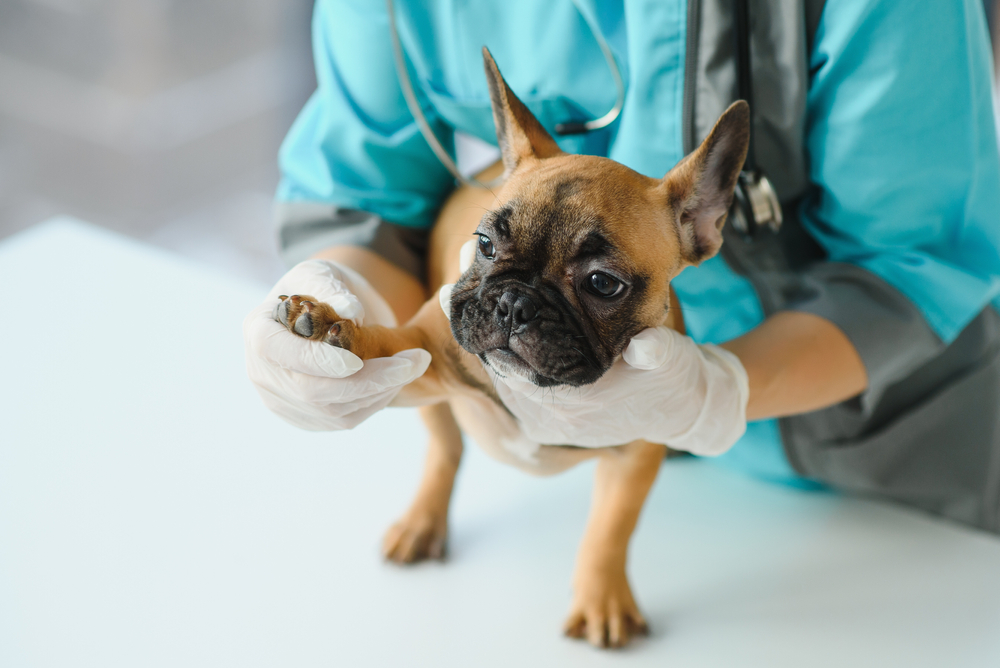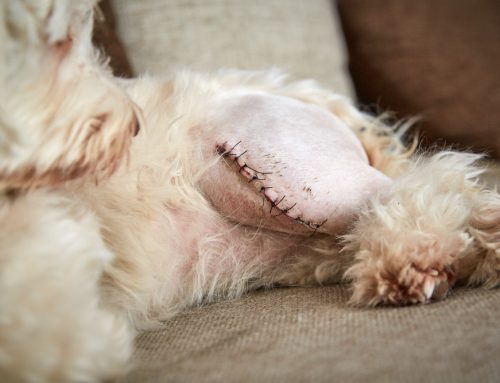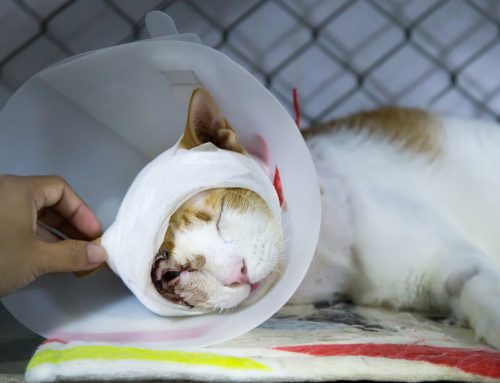Pet owners are often concerned when they notice their furry companions limping. In this comprehensive guide, our Neighborhood Veterinary Centers – Nederland team will explore the common reasons behind pet limping and explain how we can help diagnose and treat the problem.
Understanding pet limping
Limping can appear suddenly or develop gradually in pets. Sudden limping might indicate an injury or acute condition, while a gradual onset could suggest a chronic issue. Identifying how and when your pet started limping can significantly help the diagnostic process.
Some causes of limping include:
- Trauma and injuries — Dogs are prone to injuries resulting from accidents, falls, or encounters with other animals, and fractures, sprains, and strains are common. If your pet has experienced a traumatic event, immediate veterinary attention is crucial to assess and address the injury.
- Osteoarthritis — Pets can develop osteoarthritis as they age. This degenerative joint disease can cause stiffness and pain, and lead to a noticeable limp. While it is more prevalent in senior pets, osteoarthritis can also affect younger animals with certain genetic predispositions or previous injuries.
- Infection and inflammation — Infections and inflammatory conditions, such as Lyme disease or bacterial infections, can result in limping. Timely veterinary intervention is essential to identify the specific cause and begin appropriate treatment.
Diagnosing pet limping
Our veterinary team uses state-of-the-art diagnostic imaging techniques to see the internal structures of your pet’s limbs. This helps us identify fractures, joint abnormalities, or soft tissue injuries.
If you bring your pet in because of a limping problem, we will perform a thorough physical examination to assess their overall health and identify any localized pain, swelling, or abnormalities in their limbs. We may also order blood tests and other laboratory diagnostics to help rule out infectious diseases, metabolic disorders, or autoimmune conditions that could contribute to your pet’s discomfort.
Treating pet limping
Once the cause of your pet’s lameness has been determined, our veterinarians will formulate a customized pain management plan, incorporating medication, physical therapy, and lifestyle modifications.
Structural abnormalities or severe injuries may require surgical intervention. Our veterinary surgeons are experienced in orthopedic procedures, ranging from fracture repairs to joint surgeries, ensuring optimal outcomes for your pet.
Rehabilitation also plays a crucial role in the recovery process for limping pets. Physical therapy, controlled exercises, and hydrotherapy are integral components of our rehabilitation services and are tailored to meet the individual needs of your pet and promote their swift recovery.
Other treatments may include:
- Rest — In some cases, rest is all that’s needed to let your dog’s injury heal and resolve their limp.
- Pain medication — We may prescribe pain medications, such as non-steroidal anti-inflammatories (NSAIDs) to help manage your dog’s limp.
- Monoclonal antibody treatment — A once monthly monoclonal antibody treatment is available to manage canine arthritis and can significantly improve your dog’s limp.
- Laser therapy — Laser therapy is a non-invasive treatment modality that is beneficial for many conditions that cause limping in dogs.
- Home management — Making changes to your home may be necessary if your dog has a chronic condition. Potential changes include:
- Placing ramps or stairs by your dog’s favored elevated resting place
- Ensuring food and water bowls are easily accessible
- Placing rugs on slippery floors to prevent slipping
- Providing orthopedic bedding so your dog has a comfortable place to rest
Preventing future limping incidents

There are several ways to minimize the risk of your pet developing a limping problem, including:
- Routine veterinary checkups — Our team recommends regular wellness exams to monitor your pet’s overall health, identify risk factors, and implement preventive measures.
- Well-balanced diet and regular exercise — Helping your pet maintain an appropriate weight reduces the strain on their joints and minimizes the risk of conditions like osteoarthritis. Our veterinarians can provide personalized nutritional guidance for your pet’s specific needs.
- Mental and physical enrichment — Boredom and lack of mental stimulation can lead to destructive behaviors and, in some cases, musculoskeletal issues in pets. Consider puzzle toys, interactive play, and designated exercise areas to provide them with mental and physical enrichment.
If your pet is showing signs of lameness, schedule an appointment at NVC – Nederland. Through advanced diagnostics, effective treatment plans, and preventive care, we aim to ensure the well-being and happiness of your cherished companions.






Leave A Comment